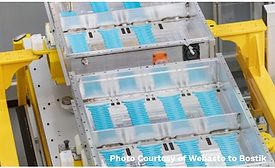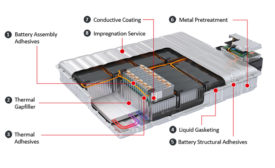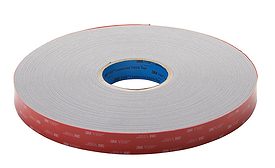Home » Keywords: » gap fillers
Items Tagged with 'gap fillers'
ARTICLES
Dow Wins Six 2021 Edison Awards
The company received five gold awards and one silver award.
May 12, 2021
Ask Dr. Dave
Could you please suggest an epoxy resin, along with a hardener and accelerator, to use as a raw material in the production of a high-temperature-resistant adhesive?
Dr. Dave provides details regarding the use of inorganic vs. organic adhesives for high-temperature applications.
May 29, 2020
Electric Vehicles and the Growing Significance of Adhesives and Sealants for Battery Assembly
Adhesives, sealants, and heat transfer materials used in battery assembly operations will find myriad opportunities in the exciting electric vehicle market.
March 9, 2020
PANACOL: Fast-Curing Epoxy Adhesive for Cosmetic Packaging
According to Panacol, the adhesive can be applied and cured quickly due to its accommodating dispensing properties.
January 30, 2020
Shin-Etsu Silicones to Showcase Thermal Management Sensor Application Products at Automotive LiDAR Conference
SESA’s focus for LiDAR and automotive sensors will reportedly be its silicone thermal interface materials (TIMs); visible light-blocking encapsulants; UV-curable, low-modulus adhesives; and anti-smudge coatings.
September 20, 2019
Henkel to Debut Electric Vehicle Battery Material Solutions at the Electric & Hybrid Vehicle Technology Expo
Henkel materials specialists have reportedly developed novel formulations that allow for large-scale production at high speed, reduce the risk of thermal event-related safety concerns, and enable various battery architectures.
September 6, 2019
3M: Commercial Vehicle Tape
Designed for sidewall and roof panel bonding, the new 3M VHB CV90F commercial vehicle tape reportedly enables fast, easy, and durable assembly in demanding transportation applications.
June 6, 2019
Ask Dr. Dave
Are there adhesives and sealants that expand on curing to fill gaps?
In his May 2019 column, Dr. Dave addresses a question about gap-filling adhesives and sealants.
May 1, 2019
Keep the info flowing with our eNewsletters!
Get the latest industry updates tailored your way.
JOIN TODAY!Copyright ©2025. All Rights Reserved BNP Media.
Design, CMS, Hosting & Web Development :: ePublishing








